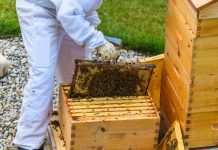Vittorio Cristini and John Lowengrub presents insight into the self-organizing morphogenesis and how it can be instigated by multimodal feedback control.

Huaming Yan1,5, Sameeran Kunche2,5, Anne L. Calof3,4,5, Arthur D. Lander2,3,5, Vittorio Cristini6, John Lowengrub1,2,5
1 Dept. of Mathematics, University of California, Irvine, CA 92697
2 Dept. of Biomedical Engineering, University of California, Irvine, CA 92697
3 Dept. of Developmental and Cell Biology, University of California, Irvine, CA 92697
4 Dept. of Anatomy & Neurobiology, University of California, Irvine, CA 92697
5 Center for Complex Biological Systems, University of California, Irvine, CA 92697
6 Center for Precision BioMedicine, Brown Foundation Institute of Molecular Medicine, University of Texas Health Science Center at Houston (UTHealth) McGovern Medical School, Houston, TX 77030, USA
One of the outstanding problems in developmental biology is to understand how tissues attain and maintain their size and form. In continually-renewing tissues, steady-state sizes can be robustly maintained through negative feedback control of cell lineage progression (1, 2). Diffusible molecules, such as morphogens and growth factors, can mediate this process by suppressing stem and progenitor cell self-renewal and promoting differentiation (3, 4). During development, however, the goal is to not to maintain size but rather to efficiently arrive at a desired final size and shape (i.e., morphogenesis). Intriguingly, negatively regulating diffusible molecules are often co-expressed with other feedback molecules that have the opposite effects—promoting renewal and suppressing differentiation. For example, in the Olfactory Epithelium the same cells that produce GDF11, which inhibits the renewal of progenitor cells, also produce FGF that upregulates progenitor cell self-renewal (5). Could the combination of positive and negative feedback control of cell lineage progression orchestrate cell intrinsic behaviors such as cell migration and differential cell proliferation in the morphogenesis of solid tissues—i.e. the formation of three-dimensional structures such as sacs, tubes, sheets, buds and branches?

In a recent paper, Kunche et al. (6) investigated this question using a mathematical and computational model. Kunche et al. found that simultaneous positive and negative feedback signaling can drive morphogenesis by regulating cell lineage progression, so that patterns arise directly out of tissue growth and cell displacement. The key idea is that such multimodal (simultaneous positive and negative) feedback can induce bistability. This is illustrated in Fig. 1. Consider a well-mixed (non-spatial) model of a continually-renewing uni-directional lineage that begins with a stem cell (SC), which produces a constant flux of intermediate, committed progenitor (CP) cells. The CPs give rise to terminally differentiated (TD) cells that then turns over with a constant half-life (Fig. 1A). The CP self-renewal probability, p, accounts for negative feedback from TD cells and positive feedback from CP cells. The dynamics of such lineage is written as a system of ordinary differential equations (ODEs). This cell lineage exhibits bistability (Fig. 1B): the system can be driven from one stable steady state to another by changing the relative strength of the positive to negative feedback (Fig. 1C).

To investigate the effects of space, where diffusible molecules form spatial gradients, and growth may displace the cells, Kunche et al. used a multiscale model framework of tissue growth developed originally by Cristini, Lowengrub and their collaborators (7-10) to describe the spatiotemporal dynamics of growing tissues. This model, which accounts for arbitrary tissue geometries and realistic biophysical boundary conditions, was used to simulate the cell dynamics (e.g., movement, proliferation, differentiation) and mechanical forces (e.g., from proliferation-induced hydrostatic stresses). Growth and diffusion were simulated in two-dimensional domains with the tissue being represented as thin, rectangular domains to mimic growing epithelial tissues (Fig. 2A). On the apical (AP) side, there is a no-flux boundary condition for the diffusing molecules to model the presence of tight junctions. On the basement membrane side (BM), the diffusing molecules can pass across to the neighboring stroma. In the stroma, there are molecules that act as absorbers, or sinks, for diffusible factors. The SC population is restricted to the BM and set to self-renew with probability ½.
Kunche et al found that the mixture of positive and negative feedback produces an ultrasensitive switch between fast and slow (or zero) growth states (bimodal growth). As in the non-spatial model, this switch is triggered by a change in the ratio of positive to negative feedback strengths. One way to accomplish this is through an exogenous source. To illustrate, Kunche et al. considered an epithelial tissue that does not self-sustain continued growth, and applied a transient exogenous source of positive feedback factors near the BM to simulate production by a cluster of stromal cells. This initiates a local outgrowth (bud) in the epithelial and produces a stratified arrangement of cells, with CP cell densities highest near the source and TD cells highest farther away (Fig. 2B). Once this bud is induced, it may sustain its growth independently after the exogenous source is removed (here, after the 12th CP cycle). The endogenous source of positive feedback factors produced by the CP cells in the bud is sufficient to drive the growth. Analogously, a transient exogenous source of negative signal can shut off growth (not shown).
Kunche et al. showed that such systems could spontaneously self-organize, producing semi-regular patterns of bulges, buds and fingers that may be seen as basic building blocks of tissue morphogenesis. This can be seen in Fig. 2C where initial shape irregularities in the BM create regions in which the relative strengths of positive to negative feedback can fall above or below the threshold required for self-sustaining growth. This initiates the localized growth of buds. Later, the buds fuse, or branch, to produce wide fingers that are independent of the details of the initial conditions, the boundary conditions and with a relatively regular spacing that is much larger than the characteristic decay lengths of the diffusible factors. While such self-organization is reminiscent of Turing patterns (11), the mechanism here is different. As with Turing patterns, this behavior depends upon diffusible, antagonistic factors (“activators” and “inhibitors”). Here, however, the patterns emerge as a spatial manifestation of bistability and bimodality generated by the diffusible factors and cell movement. Thus, unlike Turing patterns, there is no need for the diffusivities of the factors to be different—indeed in Fig. 2, the diffusible factors have the same diffusivities.
Although many mechanisms may play a role in morphogenesis of developing tissues, including regulated cell cycle progression, directed cell migration, cell sorting, and active mechanical deformation, Kunche et al. showed that feedback regulation of lineage progression is able to specify spatial structure using the same molecules that regulate tissue homeostasis, to coordinate the behaviors of cells over reasonably large spatial ranges, and to create structure through self-organization without the need for templates and pre-patterns.
Contact information:
Vittorio Cristini, PhD – ISI Highly Cited
Rochelle and Max Levit Chair in the Neurosciences
University of Texas System STAR Fellow
Adjunct Professor of Imaging Physics | MD Anderson Cancer Center
Full Affiliate Member | The Houston Methodist Research Institute
Professor with tenure and Director
Center for Precision Biomedicine | Institute for Molecular Medicine
McGovern Medical School
part of UTHealth | The University of Texas Health Science Center at Houston
1881 East Road | Room 3SCR6.4644 | Houston, TX, 77054
C: 505 934 1813 (preferred) | P: 713 486 2315 | F: 713-797-1244
https://www.uth.edu/imm/profile.htm?id=228325bf-1821-41b9-a0b8-37ca77d47c88
www.uth.edu/imm/centers/center-for-precision-biomedicine.htm
Google scholar: http://scholar.google.com/citations?user=uwl5tw0AAAAJ&hl=en&oi=ao
E-mail: Vittorio.Cristini@uth.tmc.edu
my new book:
https://www.crcpress.com/An-Introduction-to-Physical-Oncology-How-Mechanistic-Mathematical-Modeling/Cristini-Koay-Wang/p/book/9781466551343
John Lowengrub
Chancellor’s Professor of Mathematics, Biomedical Engineering, Chemical Engineering & Materials Science
Director, Interdisciplinary Graduate Program in Mathematical, Computational and Systems Biology
540H Rowland Hall
University of California, Irvine
949-751-9700 (cell)
949-824-8456 (office)
949-824-7993 (fax)








